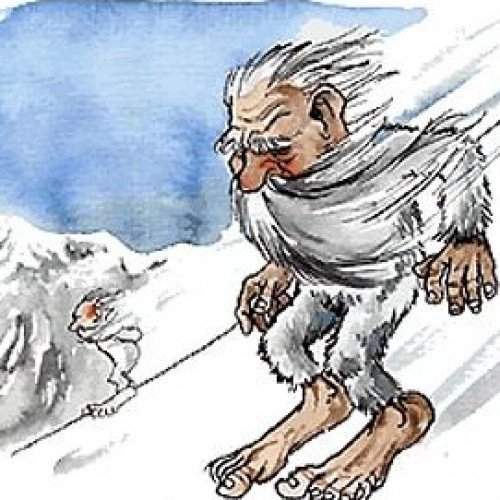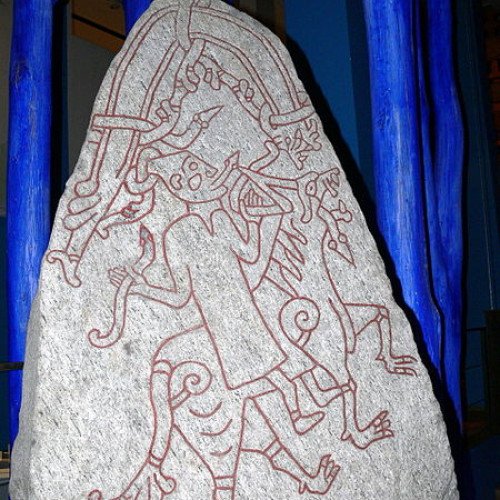Barbegazi vs Jötunn

Barbegazi
Barbegazi are mythical creatures from Swiss and French mythology. A variety of dwarf or gnome, a barbegazi resembles a small white-furred man with a long beard and enormous feet. They travel in the mountains that are their home by skiing with their massive feet, or using them as snowshoes. In the summer they aestivate in caves and tunnels and do not come out until the first snowfall. The word barbegazi comes from the French barbe-glacée, meaning "frozen beard". Because of their penchant for high altitudes and low temperatures, they are rarely sighted by humans, but sometimes help shepherds round up lost sheep. Their greatest known excitement is surfing on avalanches with their remarkably large feet, but they are said to give low whistling cries to warn humans of the danger above, sometimes they will give their best effort to dig humans out from the snow. A modern addition to this myth is the rumored migration of the Barbegazi to North America, predominantly to a locale of French origin in northwest Minnesota named Roseau County. Numerous sightings have been reported along the Roseau River, in the depths of the often frigid northern Minnesota winters.
Statistics for this Xoptio

Jötunn
In Norse mythology, a jötunn or, in the normalised scholarly spelling of Old Norse, jǫtunn (; plural jötnar/jǫtnar) is a type of entity contrasted with gods and other figures, such as dwarfs and elves. The entities are themselves ambiguously defined, variously referred to by several other terms, including risi, thurs and troll. Although the term giant is sometimes used to gloss the word jötunn and its apparent synonyms in some translations and academic texts, jötnar are not necessarily notably large and may be described as exceedingly beautiful or as alarmingly grotesque. Some deities, such as Skaði and Gerðr, are themselves described as jötnar, and various well-attested deities, such as Odin, are descendants of the jötnar. Norse myth traces the origin of the jötnar to the proto-being Ymir, a result of growth or sexless reproduction from the entity's body. Ymir is later killed, his body is dismembered to create the world, and the jötnar survive this event by way of sailing through a flood of Ymir's blood. The jötnar dwell in Jötunheimr. In later Scandinavian folklore, the ambiguity surrounding the entities gives way to negative portrayals.